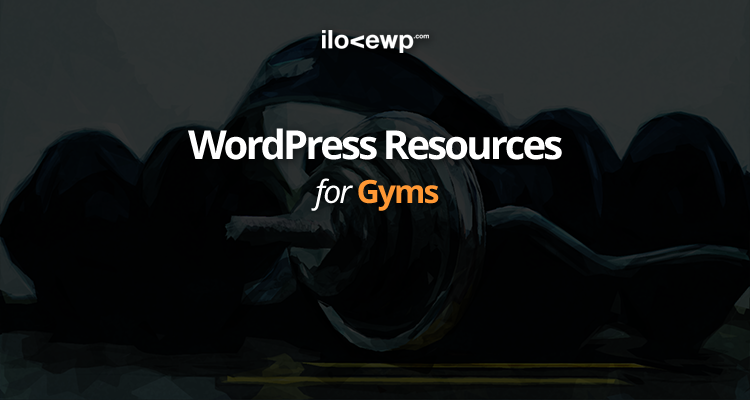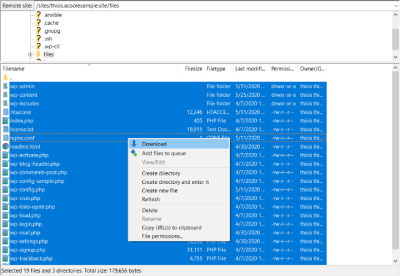Managing gym class registrations can be a real headache—tracking sign-ups, handling payments, and keeping everything organized. Luckily, if your gym runs on a WordPress website, there are fantastic plugins that can simplify this process. These tools make it easy for your members to sign up for classes online, streamline your admin tasks, and even help you collect payments seamlessly. In this guide, we’ll explore how WordPress plugins can transform your gym’s registration system into a smooth, user-friendly experience for both you and your members. Whether you’re just starting out or looking to upgrade, there’s a plugin that fits your needs.
Choosing the Right WordPress Plugin for Your Gym

Selecting the perfect WordPress plugin for gym class registration might seem overwhelming with so many options out there. The key is to find a solution that matches your gym’s specific needs, budget, and technical comfort level. Here are some important factors to consider:
- Features: Does the plugin support multiple class schedules, waitlists, recurring classes, and payment processing? Make a list of must-have features for your gym.
- Ease of Use: Is the plugin user-friendly for both your staff and members? Look for intuitive interfaces and clear documentation.
- Payment Integration: Can it handle popular payment gateways like PayPal, Stripe, or credit cards? This is crucial if you charge for classes.
- Customization Options: Can you customize registration forms, emails, and notifications to match your branding?
- Support and Updates: Is the plugin well-supported, regularly updated, and compatible with the latest version of WordPress?
- Cost: Does it fit within your budget? Some plugins offer free versions with basic features, while others are premium with advanced options.
Popular options include WP Simple Booking Calendar, Amelia, and Bookly. Take your time to explore demos and reviews—most plugins offer trial versions or demos so you can get a feel for how they work before committing.
Remember, the right plugin can save you time, reduce administrative headaches, and make your members happier with a smooth registration experience. So, choose thoughtfully, and your gym will be set up for success!
3. Installing and Setting Up the Gym Class Registration Plugin

So, you’ve decided to make your gym’s class registration process smoother and more efficient with a dedicated WordPress plugin. Great choice! Now, let’s walk through how to install and set up your new plugin without any fuss.
First things first, head over to your WordPress dashboard. On the left sidebar, click on Plugins and then select Add New. In the search bar, type in the name of your preferred gym class registration plugin—popular options include Bookly, Amelia, or Event Espresso. Once you find the one that fits your needs, click Install Now.
After the installation completes, don’t forget to hit Activate. Now, you’ll see a new menu item for your plugin on the dashboard sidebar—click on it to start the setup process.
Most plugins will have a setup wizard or a step-by-step guide to help you configure the basics. Here’s a quick rundown of what you’ll typically need to do:
- Configure General Settings: Set your gym’s name, contact info, and time zone.
- Payment Options: Connect your payment gateway if you’re charging for classes. Many plugins support Stripe, PayPal, or other popular processors.
- Notification Settings: Decide how you want to notify clients about their bookings—via email, SMS, or both.
- Customization: Adjust the appearance to match your website’s theme, including colors and labels.
Once these key settings are in place, it’s a good idea to test your registration process. Create a test class and try signing up as a user—this helps ensure everything is working smoothly. Don’t forget to check your email notifications and payment processing if applicable.
Finally, explore the plugin’s advanced options. Many offer features like waitlists, recurring classes, or integrations with calendar apps. Take some time to familiarize yourself with these features—they can really boost your gym’s registration management.
4. Creating and Managing Gym Class Schedules
With your plugin installed and set up, it’s time to start building your class schedule. This is where the magic happens—your members will see available classes and sign up easily. Let’s go through the essentials of creating and managing your gym’s schedule effectively.
First, access the scheduling section of your plugin. Usually, there’s a dedicated menu item, like Classes or Schedules. Click on it to begin adding your classes.
When creating a new class, consider including the following details:
- Class Name: Be descriptive—like “Yoga for Beginners” or “HIIT Bootcamp.”
- Description: Briefly explain what the class involves, suitable for marketing and clarity.
- Date & Time: Set the start and end times. If your classes are recurring weekly, many plugins allow you to set up repeating schedules to save time.
- Capacity: Limit the number of participants to manage space and equipment.
- Location: Specify where the class takes place if you have multiple rooms or locations.
Once your class details are filled out, save or publish the schedule. Your website visitors will now see the class available for registration, complete with date, time, and capacity info.
Managing your classes is just as straightforward. You can:
- Edit class details if schedules change or you want to add new info.
- Cancel or Delete classes that are no longer happening.
- Duplicate recurring classes to save time when creating multiple similar sessions.
Many plugins also offer calendar views, which can be embedded on your site. This visual layout helps members see upcoming classes at a glance and choose what fits their schedule best.
Regularly reviewing your schedule, adjusting class times, and updating capacities ensures your gym runs smoothly and members stay happy. Plus, integrating your schedule with your email notifications keeps everyone in the loop about new classes or changes.
In a nutshell, creating and managing your gym class schedule with a dedicated plugin makes your life easier and enhances your members’ experience. It’s all about making registration seamless and keeping your gym’s offerings well-organized and accessible.
5. Enabling User Registration and Payment Options
Once you’ve set up your basic registration system, it’s time to make it easy for gym members to sign up and pay for classes directly through your website. Enabling user registration and payment options not only streamlines the process but also enhances the overall experience for your clients.
Most WordPress membership and booking plugins come with built-in features to allow users to create accounts, register for classes, and make payments securely. Here’s how you can get started:
- Activate User Registration: Ensure that your registration plugin supports user accounts. In your plugin settings, look for options like “Enable Registration” or “Allow Users to Create Accounts.” Turn this on so visitors can sign up easily.
- Set Up Payment Gateways: To accept payments, you’ll need to connect your site to a payment gateway such as PayPal, Stripe, or other popular options. Most plugins will have a section where you can enter your API keys or login credentials to enable seamless transactions.
- Configure Payment Options: Decide whether you want to charge a flat fee per class, offer discounts for members, or provide packages. Your plugin should allow you to set these options within the payment settings.
- Test the Payment Process: Before going live, do some test transactions to ensure everything works smoothly. Make sure that users receive confirmation emails and that payments are properly recorded.
Adding these features not only saves you time but also makes it more convenient for your clients to register and pay without leaving your website. Remember to prioritize security—use SSL certificates and ensure your payment integrations are compliant with industry standards to keep your users’ data safe.
6. Customizing Registration Forms for Your Gym Classes
Every gym has unique needs when it comes to registration. Maybe you want to gather information about fitness levels, preferred class times, or health conditions. Customizing your registration forms helps you collect the specific data you need, making your classes more tailored and your management easier.
Most WordPress registration plugins offer drag-and-drop form builders or options to add custom fields. Here’s how to effectively customize your forms:
- Identify Your Information Needs: Think about what details are essential for your classes. Common fields include name, email, phone number, preferred class times, fitness goals, or medical concerns.
- Add Custom Fields: Use your plugin’s form builder to add these fields. You might include text boxes, dropdown menus, checkbox options, or date pickers depending on the info you’re collecting.
- Organize the Form Layout: Keep the form clean and user-friendly. Group related questions together and use clear labels. Consider adding section headers if your form is lengthy.
- Set Validation Rules: Make sure required fields are marked mandatory, and validate inputs (like email formats or phone numbers) to reduce errors.
- Design for Mobile: Since many users will register from their phones, ensure your forms are responsive and easy to fill out on smaller screens.
- Test the Form: Before going live, fill out the registration form yourself or ask a colleague to test it. Confirm that all data is captured correctly and that the user experience is smooth.
Custom registration forms not only improve data collection but also enhance user engagement. By asking the right questions, you can better tailor your classes, follow up with clients, and offer personalized experiences that keep members coming back.
7. Managing Registrations and Attendance Records
Once your gym class registration system is up and running, the next big step is managing those registrations effectively. It’s not just about collecting sign-ups; it’s about keeping everything organized so you can deliver a smooth experience for both you and your members.
Most WordPress plugins designed for gym class bookings come with built-in tools to track registrations and attendance. These features help you see at a glance who’s signed up, who’s attended, and who might need a gentle reminder. Managing these records ensures you can plan your classes better, allocate resources, and even analyze trends over time.
Here’s what you should focus on:
- Real-time registration management: Keep track of new sign-ups and cancellations as they happen. This way, you won’t oversell classes or leave spots empty.
- Attendance tracking: Use the plugin’s features or integrate with other tools to mark attendance during classes. Some plugins even allow members to check-in via their mobile devices, reducing manual effort.
- Automated notifications: Send automated emails or SMS reminders to members about upcoming classes or if they missed a session. This encourages continued engagement and reduces no-shows.
- Report generation: Generate reports to see attendance patterns, popular classes, and member activity. This data can inform your scheduling decisions and marketing strategies.
In addition to built-in features, consider integrating your booking plugin with your CRM or email marketing tools. This allows for seamless communication and helps build a loyal community around your gym. Also, ensure your system is GDPR-compliant if you’re dealing with members’ personal data.
Managing registrations and attendance might seem daunting at first, but with the right tools, it becomes a breeze. Regularly review your records, stay on top of attendance, and use the data to improve your classes and member experience. Remember, a well-organized registration system not only saves you time but also boosts member satisfaction and retention.
8. Tips for Optimizing Your Gym Class Booking System
Now that you’ve got your registration system in place, it’s time to optimize it for maximum efficiency and user satisfaction. An intuitive, streamlined booking experience encourages members to sign up and keep coming back. Here are some practical tips to make sure your system is working at its best:
1. Simplify the Booking Process
People love quick and easy experiences. Minimize the number of steps needed to register—ideally, just a few clicks. Use clear labels, straightforward forms, and avoid unnecessary fields. Consider enabling guest bookings or allowing members to save their details for future sign-ups.
2. Mobile Optimization is Key
Many users will access your booking system via smartphones. Make sure your plugin is mobile-friendly, with responsive design and easy navigation. Test the booking process on different devices to ensure it’s smooth everywhere.
3. Offer Multiple Payment Options
If your classes are paid, provide a variety of payment methods—credit/debit cards, PayPal, Stripe, or even digital wallets. This flexibility reduces friction and increases the likelihood of completing a booking.
4. Use Calendar Views and Reminders
Integrate a calendar view so members can see upcoming classes easily. Send automated reminders as the class date approaches—this can reduce no-shows and keep your schedule full.
5. Collect Feedback and Reviews
Encourage members to leave feedback after classes. Use this input to refine your system and improve the overall experience. Some plugins allow you to add review sections directly into the booking process.
6. Promote Your Booking System
Make sure your members know about your online booking options. Promote it via your website, social media, and email campaigns. The easier it is to find and use, the more members will utilize it.
7. Regularly Update and Test
Technology evolves, and so should your booking system. Regularly update your plugins, test the booking flow, and fix bugs promptly. Keep an eye on user analytics to identify bottlenecks or drop-off points.
By following these tips, you’ll create a seamless booking experience that encourages more sign-ups, reduces administrative headaches, and ultimately helps your gym thrive. Remember, a well-optimized system isn’t a one-time setup—it’s an ongoing process of refinement and improvement.
Conclusion and Next Steps for Effective Gym Class Management
Managing gym class registrations efficiently is crucial for providing a seamless experience for both instructors and participants. By leveraging the right WordPress plugins, you can streamline sign-ups, automate reminders, and keep track of attendance with ease. Remember, the key to successful gym class management lies in choosing plugins that are user-friendly, reliable, and adaptable to your specific needs.
As a next step, evaluate your gym’s requirements to select the most suitable plugins. Consider features such as:
- Ease of Use: Ensure the interface is intuitive for both staff and clients.
- Customization: Ability to tailor registration forms and schedules.
- Integration: Compatibility with payment gateways and calendar apps.
- Analytics and Reporting: Track attendance and revenue effectively.
Once you’ve selected and installed your plugins, dedicate time to configuring settings and testing the registration process. Regular updates and maintenance will help prevent issues and keep your system running smoothly. Additionally, gather feedback from users to identify areas for improvement, ensuring your gym class registration system remains efficient and user-friendly.
In conclusion, a well-implemented WordPress plugin strategy can dramatically enhance your gym’s operational efficiency, improve client satisfaction, and boost your overall business growth. Stay proactive in exploring new tools and features to continually optimize your class management process.


